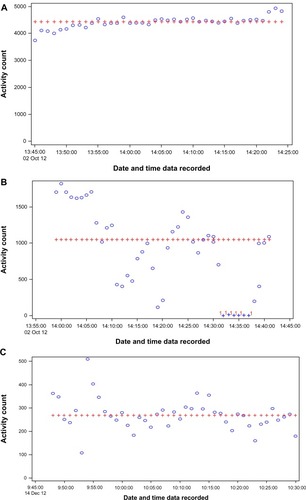Figures & data
Table 1 Description of mini-campaigns
Table 2 LIFE campaign: Stride for LIFE
Table 3 LIFE Study baseline characteristics
Table 4 Barriers/facilitators to self-regulation (%)
Table 5 Patterns of activity during center-based exercise by sex
Figure 1 Panels (A–C) represent three representative accelerometry recordings from center-based exercise training.
